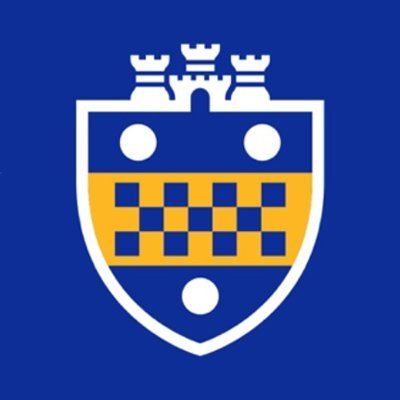预约演示
更新于:2025-05-07
c-Myc x MAX
更新于:2025-05-07
关联
5
项与 c-Myc x MAX 相关的药物作用机制 MAX modulators [+2] |
在研适应症 |
非在研适应症- |
最高研发阶段临床前 |
首次获批国家/地区- |
首次获批日期1800-01-20 |
作用机制 MAX inhibitors [+1] |
在研适应症 |
非在研适应症- |
最高研发阶段临床前 |
首次获批国家/地区- |
首次获批日期1800-01-20 |
作用机制 MAX inhibitors [+1] |
在研机构 |
原研机构 |
非在研适应症- |
最高研发阶段临床前 |
首次获批国家/地区- |
首次获批日期1800-01-20 |
100 项与 c-Myc x MAX 相关的临床结果
登录后查看更多信息
100 项与 c-Myc x MAX 相关的转化医学
登录后查看更多信息
0 项与 c-Myc x MAX 相关的专利(医药)
登录后查看更多信息
1,001
项与 c-Myc x MAX 相关的文献(医药)2025-12-01·Current Genetics
Transcriptional activation and coactivator binding by yeast Ino2 and human proto-oncoprotein c-Myc
Article
作者: Schüller, Hans-Joachim ; Wierzbicka, Wiktoria ; Lettow, Julia ; Wendegatz, Eva-Carina
2025-04-25·Science Advances
MAX inactivation deregulates the MYC network and induces neuroendocrine neoplasia in multiple tissues
Article
作者: MacPherson, David ; Ibrahim, Ali H. ; Eisenman, Robert N. ; Bronson, Roderick T. ; Freie, Brian ; Augert, Arnaud ; Carroll, Patrick A.
2025-04-23·Journal of the American Chemical Society
Proteomimetic Strategy for the Modulation of Intrinsically Disordered Protein MYC
Article
作者: Arora, Paramjit ; Nguyen, Thu ; Hong, Seong Ho
1
项与 c-Myc x MAX 相关的新闻(医药)2025-03-24
·精准药物
Whitfield研究员和Laura Soucek教授2025年2月19日在Nature reviews drug discovery发表了最新关于MYC靶点的综述,介绍了该靶点的研究进展,以及靶向MYC的药物开发策略,聚焦最新抑制剂和进入临床试验的药物,关注MYC 抑制剂的临床应用。近年来,研究人员开发了多种直接和间接抑制MYC的新方法,包括寡核苷酸疗法、小分子抑制剂、蛋白降解剂等。目前,一些MYC抑制剂已进入临床试验阶段,并显示出一定的疗效和安全性,这也许标志着MYC靶向治疗进入了新的阶段。
介绍
MYC 在40多年前就被确认为致癌基因,它编码一种多效性转录因子,该因子可指导参与肿瘤发生的多个细胞内和细胞外程序,MYC 通过调控这些程序,在肿瘤的形成和发展中发挥关键作用。并且,多种上游致癌信号通路都会激活MYC,使其 成为了各种肿瘤适应症和不同突变谱的理想靶点。然而多年来,它一直被认为是 “不可成药” 的靶点,这主要是由于其自身结构特点、作用机制复杂以及对正常组织潜在风险等因素。尽管如此,随着研究推进,尤其是最初研发并发表于 1998 年的Omomyc改变了人们对 MYC 的认知,使其从 “不可成药” 转变为 “难以成药但值得进一步研究” 的靶点。Omomyc 是一种由 91 个氨基酸组成的微型蛋白,作为 MYC 的显性负调控因子发挥作用,在肿瘤治疗中取得显著疗效,同时在正常组织中仅引起轻微且可逆的副作用。基于 Omomyc 研发的 OMO-103 是首个进入临床试验的相关药物,并初步验证了药物的安全性和有效性。
图1 | MYC:从发现到走上临床试验的时间线
MYC的家族成员:c-MYC, MYCN(N-MYC), MYCL(L-MYC)都属于近端 MYC 网络,这个网络中的蛋白质都具有相似的 DNA 结合和二聚化结构域:碱性螺旋 - 环 - 螺旋亮氨酸拉链(bHLHZ)。MYC 家族成员除了 C 端的 bHLHZ 结构域,还包含 N 端反式激活结构域(TAD)和中央区域。这些区域中的 MYC 盒虽能与转录调控相关辅因子相互作用,但结构不明确,使得大多数针对 MYC 抑制策略的结构研究集中于 bHLHZ 结构域。正常情况下,MYC 表达与细胞增殖相关转录程序有关,且受到严格调控,蛋白半衰期约 20 分钟,通过有序磷酸化和蛋白酶体降解进行调节。然而在癌症中,MYC 会因基因易位、扩增或上游如 Notch、Wnt-β-catenin 等致癌信号通路的持续激活和稳定而失调。
肿瘤对 MYC 的依赖通过持续信号传导建立,而非 MYC 的绝对水平。所以MYC 影响肿瘤的几乎所有标志性特征,包括生长、增殖、蛋白合成、代谢改变、血管生成和免疫抑制等。也因此,MYC 成为癌症研究中热门的靶点,促使全球研究团队开发直接或间接抑制其在癌细胞中功能的策略。
直接抑制 MYC 的方法
最早的 MYC 抑制剂大约在二十年前进入临床试验,在 OMO - 103 最近开展试验之前,所有这些抑制剂都已被终止研发或者没有再进一步推进。表 1 总结了直接靶向 MYC 的抑制剂的临床情况 。下面简单介绍一下相关抑制剂的情况。
1.核酸类抑制剂
2.反义寡核苷酸(ASOs):早期的 INX - 3280 进入临床试验但终止;之后的AVI - 4126 被发现后在临床试验中显示出生物利用度,但多用于心血管试验;经修饰的 MYCASOs 在肝癌模型有一定效果。
3.诱饵寡核苷酸:通过携带 MYC 的共识结合序列(E - box)与内源性 DNA 竞争结合转录因子来抑制 MYC。虽有体外效果,但体内研究未推进。
4.siRNA :DCR - MYC 通过脂质纳米颗粒(LNPs)递送进入 I 期和 Ib/II 期临床试验,但因基因沉默不足而终止。近期,Hu 等人开发的修饰后的 siRNA 脂质体在治疗胶质瘤小鼠模型中显示出一定效果,提示优化 siRNA 递送系统可能提高其临床应用潜力。
5.肽核酸(PNA):Biogenera SpA 开发的针对 MYCN 的抗基因肽核酸 BGA002,在临床前研究中与维甲酸联合使用,可激活神经母细胞瘤细胞系的神经元分化,在小鼠模型中能减少肿瘤血管化,提高生存率。BGA002 已获得多项孤儿药认定,公司计划开展临床试验。
6.G - 四链体(G4)稳定剂:利用 MYC P1 启动子中 G4 结构开发的 G4 稳定剂可阻止 RNA 聚合酶转录,从而抑制 MYC 表达。多种 G4 稳定剂如 D089、EP12 等在细胞和动物模型中显示出抑制肿瘤细胞生长的活性,部分已进入临床试验,但由于 G4 在基因组中的相似性,这些化合物的抗癌活性是否真由特异性靶向 MYC 介导仍存在争议,目前研究聚焦于提高其对 MYC 的选择性。
7.小分子抑制剂:主要通过破坏 MYC - MAX 异源二聚化和与 DNA 的结合来抑制 MYC。高通量筛选等方法发现了多个有潜力的小分子,如 MYCMI - 6、MYCi975 等,在多种肿瘤细胞系和动物模型中显示出抑制肿瘤生长的效果,但除 AntiMYCon(N77)外,多数尚未进入进一步临床开发。
8.肽和小蛋白方法:Omomyc是一种 91 个氨基酸的小蛋白,作为 MYC 显性负性抑制剂,通过与 MYC、MAX 形成转录无活性的复合物来干扰 E - box 结合和转录激活。Omomyc 在转基因小鼠和癌症细胞模型中广泛验证了其抑制 MYC 的效果,基于此开发的 OMO - 103 已进入临床试验,显示出安全性和初步疗效。它由 Peptomyc 公司研发,目前正处于针对转移性胰腺癌的 Ⅰ 期临床试验阶段,此前还曾针对包括非小细胞肺癌、三阴性乳腺癌和结直肠癌在内的实体瘤开展研究 。
9.其他肽类抑制剂:如基于 MYC HLH 结构域螺旋 1(H1)开发的融合蛋白 PNDD1 和热靶向版本的 H1,在临床前研究中显示出抑制 MYC 的活性,但尚未进入临床试验。IDP Discovery Pharma 公司的 IDP - 121 短肽已进入 I/II 期临床试验,用于治疗难治性或复发性血液系统恶性肿瘤;IDP - 410 stapled 肽可靶向 N - MYC,在治疗胶质瘤的小鼠模型中显示出疗效,但目前尚无其进入临床开发的信息。
10.MYC降解剂:利用蛋白降解技术开发,如 WBC100 进入临床试验,ProMyc 等在动物模型有疗效。
Fig. 3 | Inhibitors of MYC–MAX dimerization and DNA binding
Fig. 4 | MYC degraders
间接抑制 MYC 的方法
1.调节相关蛋白:
稳定 MAX 同源二聚体:2019 年发现的 KI-MS2-008 能稳定 MAX 同源二聚体抑制癌细胞生长,但临床应用及对 MYC 近端网络的影响有待研究。
利用 MXD1 相关蛋白:小蛋白 Mad 可结合 MAX 和 E-boxes 抑制 MYC,但缺乏体内数据和后续研究。
2.干扰翻译过程:eIF4A1 是 eIF4F 翻译起始复合物的核心解旋酶,在多种肿瘤中高表达,通过多种靶向策略可干扰其与 MYC mRNA 的结合,进而抑制肿瘤细胞生长,为癌症治疗提供新方向。例如在髓母细胞瘤和慢性淋巴细胞白血病模型中,相关抑制剂能抑制细胞增殖。eIF4F 靶向药物已进入临床试验,其后续在 MYC 高表达肿瘤中的疗效也受到研究者的关注。
3.BET 抑制剂(BETi):BETi 通过抑制 BET 蛋白降低 MYC 表达,但在部分肿瘤中效果不佳且有脱靶毒性,疗效与 MYC 表达关系尚不明确,仍需进一步研究。
4.其他降解剂:MRT-2359 作为 GSPT1 分子胶降解剂进入 I/II 期临床试验,dBET1 可降解 BRD 蛋白降低 MYC 水平,但暂无进一步开发进展。
5.表观基因组调节:OTX-2002 通过表观遗传调节下调 MYC 表达,正在进行 I/II 期临床试验,初步数据良好。
6.CDK9 抑制:CDK9 抑制剂 KB-0742 在 I/II 期临床试验表现良好,已进入 II 期用于治疗相关肿瘤。
7.其他策略:细菌蛋白酶 Lon、aureolic acid 类抗生素、热疗、抗 MYC 纳米抗体等在抑制 MYC 方面有一定效果,但各有局限性或仍在早期研究中。
总结
针对 MYC 的直接和间接抑制策略众多,多种抑制剂已进入临床试验阶段,这表明 MYC 成为临床可成药靶点的目标或许即将实现。但部分有潜力的抑制剂因技术或资金问题被放弃,随着技术的进步,如病毒递送 shRNA、纳米载体封装等技术的进步,这些抑制剂值得重新评估和研究。
在 MYC 靶向治疗领域,未来有着多方面的发展方向。首先,需明确 “MYC addiction” 的生物标志物,以此确定能从 MYC 抑制剂治疗中获益的癌症患者,实现精准治疗。其次,鉴于 MYC 的多效性和在耐药中的作用,联合现有疗法进行治疗,有望产生协同效应并克服耐药性,特别是与免疫检查点抑制剂联合可增强癌症免疫治疗效果。再者,正在进行的多项评估 MYC 靶向化合物的临床试验至关重要,其结果将推动该领域发展,加速 MYC 抑制剂的临床应用,造福更多癌症患者。最后,由于 MYC 在多种细胞过程中发挥作用,其抑制剂未来不仅局限于癌症治疗,还可能拓展到其他疾病领域,为更多患者带来新希望。
参考文献
Whitfield, J.R., Soucek, L. MYC in cancer: from undruggable target to clinical trials. Nat Rev Drug Discov (2025). https://doi.org/10.1038/s41573-025-01143-2
声明:发表/转载本文仅仅是出于传播信息的需要,并不意味着代表本公众号观点或证实其内容的真实性。据此内容作出的任何判断,后果自负。若有侵权,告知必删!
长按关注本公众号
粉丝群/投稿/授权/广告等
请联系公众号助手
觉得本文好看,请点这里↓
AACR会议寡核苷酸信使RNA
分析
对领域进行一次全面的分析。
登录
或

生物医药百科问答
全新生物医药AI Agent 覆盖科研全链路,让突破性发现快人一步
立即开始免费试用!
智慧芽新药情报库是智慧芽专为生命科学人士构建的基于AI的创新药情报平台,助您全方位提升您的研发与决策效率。
立即开始数据试用!
智慧芽新药库数据也通过智慧芽数据服务平台,以API或者数据包形式对外开放,助您更加充分利用智慧芽新药情报信息。
生物序列数据库
生物药研发创新
免费使用
化学结构数据库
小分子化药研发创新
免费使用


